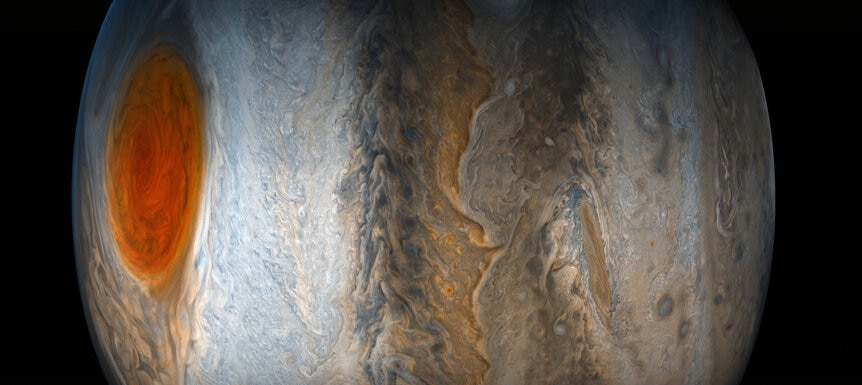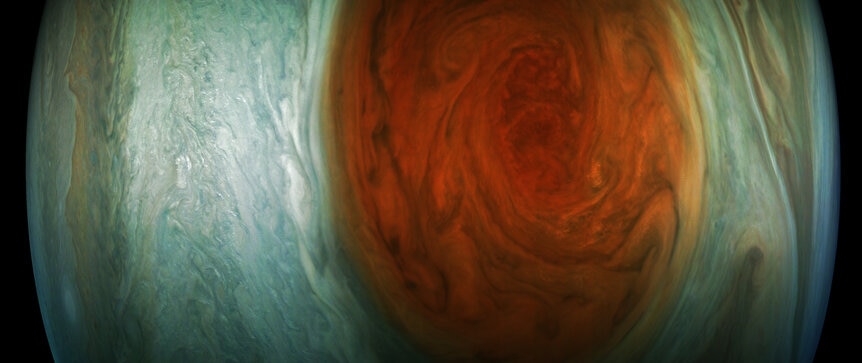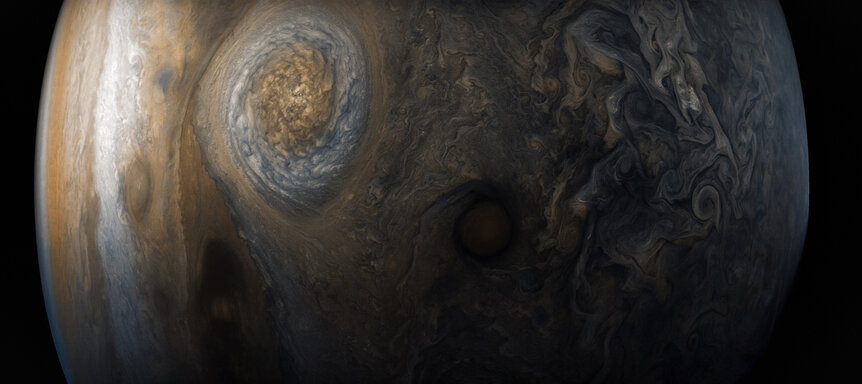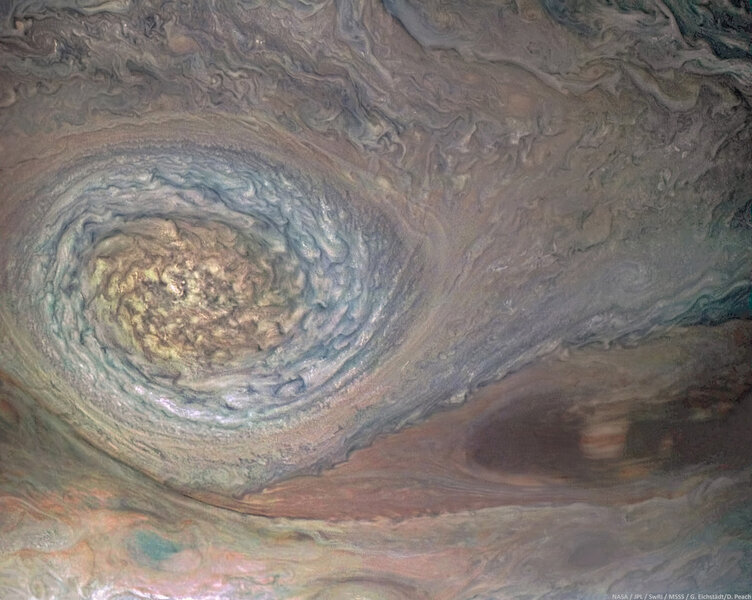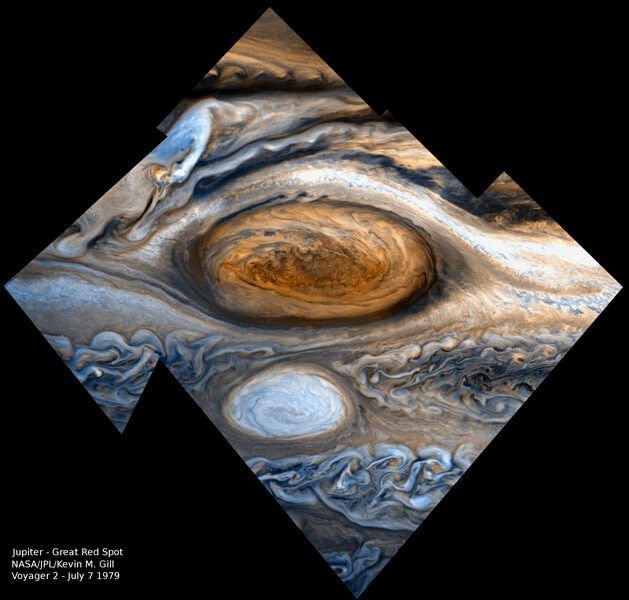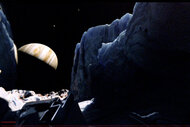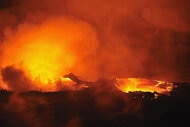Create a free profile to get unlimited access to exclusive videos, sweepstakes, and more!
The Great. Red. Spot.
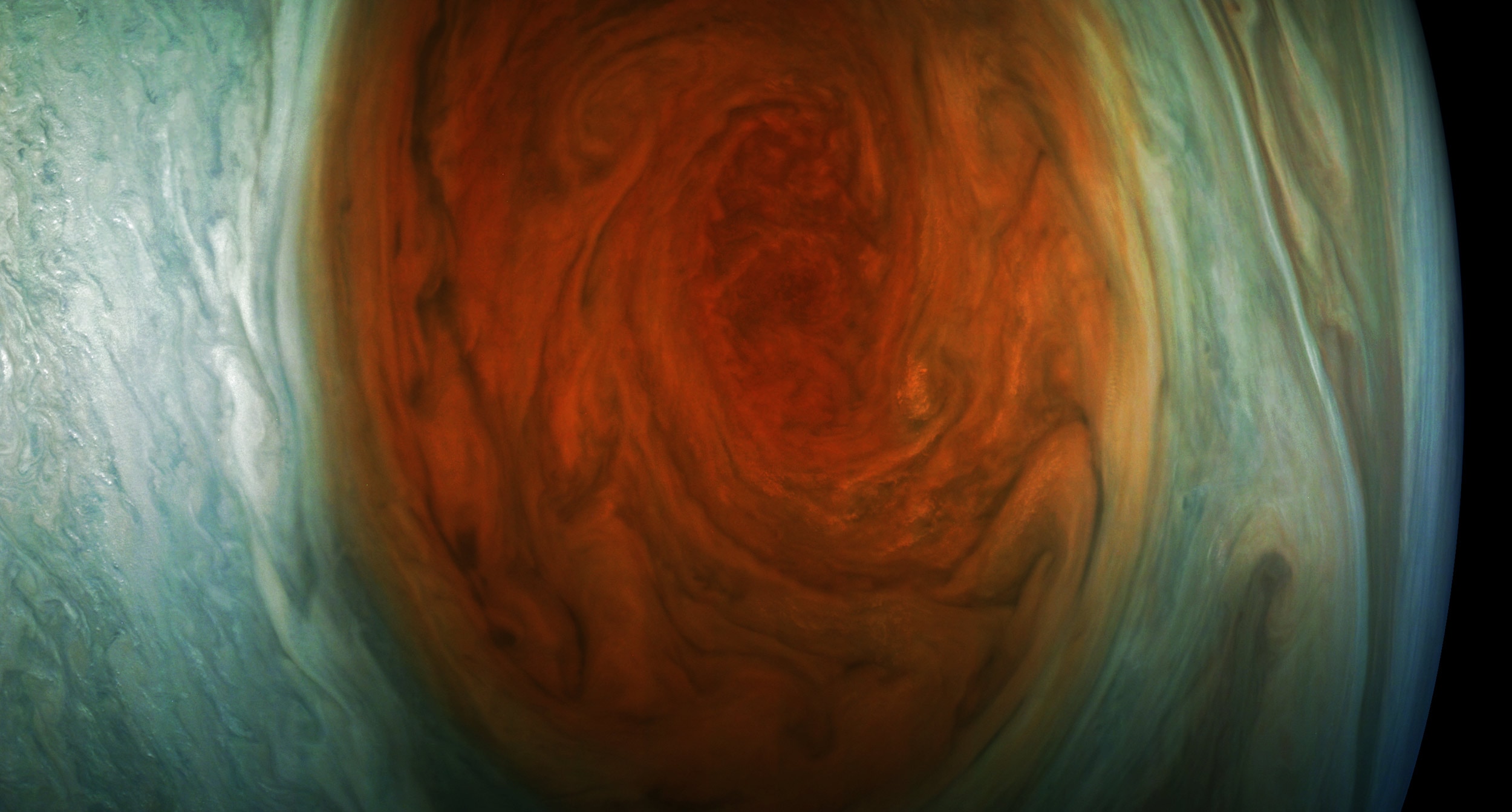
On July 11, 2017, at 00:55 UTC, the armored tank of a space probe Juno reached perijove, the closest point in its orbit over the mighty planet Jupiter. Screaming above the cloud tops at over 200,000 kilometers per hour — fast enough to cross the continental Unites States in a minute and a half — it took eleven minutes and 33 seconds to reach the Great Red Spot.
Looking down from its height of a mere 9000 km above the clouds, what it saw was ... glorious.
[Are you kidding me? Wow. Jupiter, the Great Red Spot and the jaw-dropping beauty of atmospheric turbulence on a giant planet. And this is a smaller version; here's the huge one (7800 x 3500 pixels!). Credit: NASA / SwRI / MSSS / Gerald Eichstädt / Seán Doran]
The Great Red Spot is a storm, a vast, sprawling magnificent anti-cyclone, a high-pressure vortex that’s been swirling in Jupiter’s clouds for centuries. I wrote quite a bit about it last week in preparation for the Juno images, so please read that to find out more, and watch my episode of Crash Course Astronomy on Jupiter for more about the massive planet and its ridiculously huge storm systems.
But I feel the need to give you a sense of scale here. Jupiter and Earth are both planets, but could scarcely be placed under that name together when you compare them. Jupiter is over 143,000 km across its equator, 11 times wider than Earth. 1300 Earths could fit inside it with room to spare. It has over 300 times the mass of our planet, too. All the other planets in the solar system could fit inside it.
[Jupiter's Great Red Spot, seen by the Juno spacecraft on July 11, 2017. Credit: NASA/JPL-Caltech/SwRI/MSSS/Gerald Eichstadt]
The Great Red Spot is a storm befitting such a huge world. It’s currently 16,400 kilometers across — nearly 1.3 times wider than our entire planet Earth! It’s actually shrinking, and no one really knows why. It’s only about a third as wide as it was a few decades ago. Perhaps Juno data will help planetary scientists figure that out.
The detail is phenomenal. You can see how the rotation of the spot creates turbulence and smaller vortices as the atmospheric gas inside the spot rubs up against the atmosphere around it. Something I didn’t expect is that the level of resolution allows subtle details to catch the eye, like shadows of some clouds indicating their higher altitude! That’s astonishing; previous images of the spot tend to make it look flat, two-dimensional, but now we’re starting to see vertical information. I can imagine atmospheric scientists drooling over this data, allowing them to make more maps of the structure of Jupiter’s fantastically complicated atmosphere.
[Credit: NASA / SwRI / MSSS / Gerald Eichstädt / Seán Doran]
The Great Red Spot wasn’t the only thing Juno saw up close. It also passed over the Little Red Spot, a similar storm but only (heh, “only”) half the size. You can see some vertical detail in this shot as well!
[Credit: NASA/JPL-Caltech/SwRI/MSSS/Damian Peach]
The last time any probe was able to see the Great Red Spot in detail was Galileo, which orbited Jupiter for nearly eight years, starting in 1995, before it burned up in the planet’s atmosphere in 2003. The Voyager 1 and 2 probes passed the planet in March and July of 1979 before that.
[Voyager 2 saw the Red Spot in 1979. Credit: NASA/JPL/Kevin M. Gill]
Juno’s primary mission actually isn’t to image the planet, though! It’s designed to use various detectors to learn more about Jupiter’s interior, composition and possible formation. Those instruments are buried deep inside the spacecraft, protected against the brutal radiation environment near Jupiter. The JunoCam was built specifically as a public outreach effort. I love this: There’s no way NASA was going to send a spacecraft to Jupiter, let it drop down so close to the cloud tops and not send pictures back! So the camera was built by Malin Space Science Systems as an effort to get the public excited about Jupiter and space exploration.
It’s working! The images are public as soon as they get back from Juno, and a lot of very dedicated and talented folks immediately tackle them, processing them and creating the incredible art you can see for yourself at the Juno image gallery.
Even though this is the seventh perijove dive, it’s the first time we’ve seen the Great Red Spot up close. Jupiter is big, and the Spot is small in comparison. Juno is on a polar orbit, so it passes over Jupiter’s north pole, moving southward over the clouds. It gets so low that it can only see part of the planet at any one time, with its view widening as it rises higher. Because of that we see a long “vertical” swath of Jupiter cutting across all latitudes but only at a narrow range of longitudes. If that doesn’t include the spot, we miss it.
But this time the stars aligned, so to speak. I’ll note that Juno is not on the orbit now it was intended to have. A pair of stuck valves prevented an engine burn that would have dropped the spacecraft into a lower orbit, circling the planet every two weeks. Engineers opted to not make a risky burn that might put Juno in the wrong orbit, and instead left it in the two-month-long, far higher and more elliptical orbit. It can still do the science needed in this orbit.
The camera is by necessity on the outside of the spacecraft, and getting damaged by that radiation every time Juno approaches Jupiter on its 53-day elliptical path. I haven’t seen any news on how well the camera is holding up, but it may only last one more perijove pass. Perhaps, like so many other machines we send out to visit other worlds, it will exceed expectations. These images are dazzling. Of course, the science from the other instruments will continue, and the mission has already been an astonishing success. But there’s still much to learn, and much to see. Here’s to Juno and its camera surviving for many more orbits, and sending back more amazing images of this stunningly beautiful alien world.
[Top image: NASA/JPL-Caltech/SwRI/MSSS/Gerald Eichstadt]
